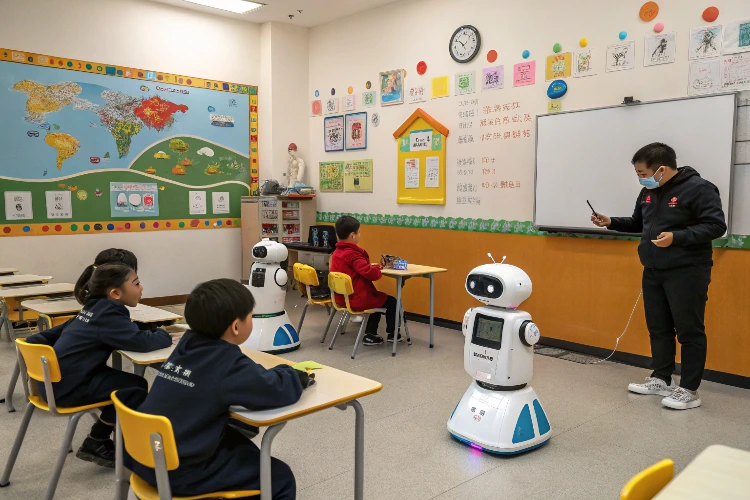Japan Integrates Robotics into Primary School Learning

Japan’s Ministry of Education has formally integrated robotics into the national primary school curriculum, making it one of the first advanced economies to mainstream hands-on automation and AI literacy at the foundational education level. The reform reflects Japan’s ongoing commitment to fostering technological fluency and nurturing homegrown innovation from an early age.
Robotics as a Core Educational Pillar
Beginning in the 2025 academic year, students as young as seven will engage with robotics programming, sensor-based logic, and human-machine interaction as part of their science and technology studies. The curriculum is designed to blend practical skills with creativity, teaching students to build, code, and operate simple robotic systems while understanding the ethical and societal impact of intelligent machines.
“Robotics is not just a skill—it is a new language of innovation,” said Keiko Nagaoka, Japan’s Minister of Education. “We are embedding that language in the minds of the next generation.”
Curriculum Features and Learning Objectives
The new curriculum includes:
-
Block-based coding platforms such as Scratch and mBlock to teach logic and automation
-
Hands-on robotics kits for building sensors, motors, and movement logic
-
Group-based problem solving, where students co-develop robots to solve real-world tasks (e.g., cleaning, sorting, detecting obstacles)
-
Ethical discussions around AI, data privacy, and job automation
-
Interdisciplinary projects connecting robotics to math, science, and arts
The program also introduces foundational AI awareness modules, helping children grasp how intelligent systems “learn” and make decisions.
National Infrastructure and Teacher Enablement
To support implementation, the government will deploy:
-
Certified robotics labs in all public primary schools by 2026
-
Teacher training initiatives in partnership with universities and edtech firms
-
A national robotics education cloud platform with interactive lessons and student portfolios
-
Curriculum localization options to allow rural and urban schools equal access
Tech companies including Sony, SoftBank, and Panasonic are expected to play a supporting role by supplying hardware, open-source tools, and mentorship programs.
Building a Generation of Tech-Literate Innovators
Japan’s educational shift is rooted in long-term economic and demographic strategies. As the country grapples with a shrinking workforce, robotics is seen as both a national strength and a necessity. By integrating robotics into primary learning, Japan aims to:
-
Cultivate a generation fluent in automation, design thinking, and computational logic
-
Prepare students for STEM careers and entrepreneurship
-
Maintain national leadership in advanced manufacturing, service robotics, and AI
Global Implications
The reform has drawn attention from global education experts and innovation policymakers, many of whom see it as a model for blending technical education with values-based learning. UNESCO and the OECD have praised the initiative as a “forward-looking, inclusive model for digital literacy in the 21st century.”
